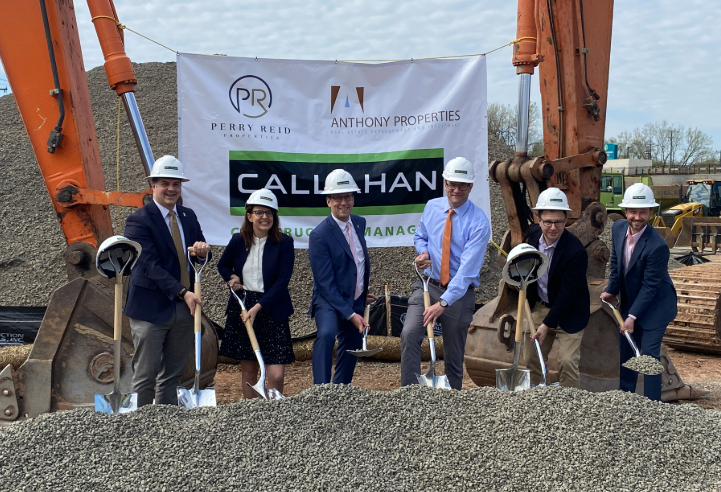News: Connecticut
Posted: September 18, 2008
Connecticut remains one of the healthiest multifamiy markets in the United States
Strong job growth in Connecticut's major metropolitan areas, stricter mortgage underwriting standards and increasing single-family home foreclosure activity are projected to create solid tenant demand for Connecticut multifamily units moving into 2009. In addition, the Treasury Department's recent decision to bail out Fannie Mae and Freddie Mac should increase investor activity in the Connecticut market as conduits and CMBS issuers find renewed stability upon reports that the Federal Housing Finance Agency is currently backing securities.
Limited deliveries of new multifamily units should keep overall vacancy rates relatively stable through year-end 2008. In the first quarter of 2008, apartment completions totaled 294, and now new units are scheduled for the second quarter in New Haven. In 2008, however, apartment completions are expected to increase to 900, not including condominiums, townhouses and seniors housing completions. In Fairfield County, second-quarter apartment completions totaled 126 units; however, total 2008 completions are forecast to reach 676 units.
Investors looking to place their capital in multifamily and commercial real estate projects in Connecticut have a few to consider. The Wintergreen of Westville, a 294-unit luxury multifamily community has been delivered in the Westville New Haven submarket. A 28-unit multifamily community is in the works in Madison and is scheduled for completion in 2008. A majority of new construction is occurring in the cities of New Haven and Naugatuck, as both have seen improvement in vacancies. In fact, New Haven vacancies remain far below the second-quarter U.S. national average of 6%.
In the second quarter of 2008, New Haven vacancy rate declined 30 basis points from last quarter to 3.8%; however, vacancy is forecast to tick up to 4.7% by year-end 2008. The suburban submarket is seeing the biggest improvements in vacancies from second-quarter 2007 to second-quarter 2008, with a decrease from 5.2% to 3.6%. Class A apartment vacancy rates decreased from 3.3% to 4.2% in the second quarter, while Class B/C apartment vacancy rates increased slightly from 4% to 4.3% in the second quarter. In Fairfield County, the second-quarter vacancy rate increased 30 basis points from the last quarter to 5.2%. Overall, vacancy rates are forecast to remain at 5.2% by year-end 2008. In the second quarter, Class A apartment vacancy in Fairfield County decreased 3.7% from 4.4%, while Class B/C apartment vacancy rates increased from 5.9% to 7.6% in the second quarter.
Sales velocity and investor interest in Connecticut apartment assets remains strong, judging by recent sales data. At the end of the second quarter of 2008, Marcus & Millichap tracked the sale of 616 units for a total of $56.49 million in New Haven County at a price of just over $90,000 per unit. In 2007, 1,417 multifamily units were traded for $115.7 million, compared to 1,404 units traded for $84.7 million in 2006. By the end of the second quarter of 2008 in Fairfield County, 523 units traded for $283.35 million at a price in excess of $500,000 per unit. In 2007, 799 multifamily units traded for $452.48 million, compared to 1,010 units for $390.21 million in 2006.
In New Haven County, asking rents averaged $1,300 per month in second-quarter 2008, an increase of 1.4%. Class A asking rents hit $2,293 per month in the second quarter, a gain of 1.8%, while Class B asking rents ticked up 7.6% to $1,459 per month. The highest priced rents are expected to be found in the north New Haven submarket, with asking rents coming in at $1,126 per month. In Fairfield County, asking rents averaged $1,814 per month in 2Q 2008, a gain of 1.5%. Class A asking rents increased 1.4% to $1,300 per month in the second quarter, while Class B/C asking rents went up 2.4% to $855 per month. Expect west Fairfield properties to feature the highest rents by year's end: Asking rents are projected to reach $2,121 per month.
Connecticut remains one of the healthiest multifamily markets in the United States. Rental rates continue to rise, cap rates remain relatively low compared to other regions of the country and tighter underwriting standards have stabilized investment activity to more normalized levels in 2008. Over the long term as economic momentum continues to improve, expect the Connecticut apartment sector to record substantial gains, driven by solid demographics.
Steve Witten is a vice president investments and senior director of Marcus & Millichap Real Estate Investment Services' National Multi Housing Group in New Haven.
Tags:
Connecticut
MORE FROM Connecticut
Highcap Group brokers $41.1 million sale of two building multifamily portfolio
Norwalk, CT Highcap Group has completed the sale of two luxury multifamily properties with a total of 120 units for a combined purchase price of $41.4 million.








